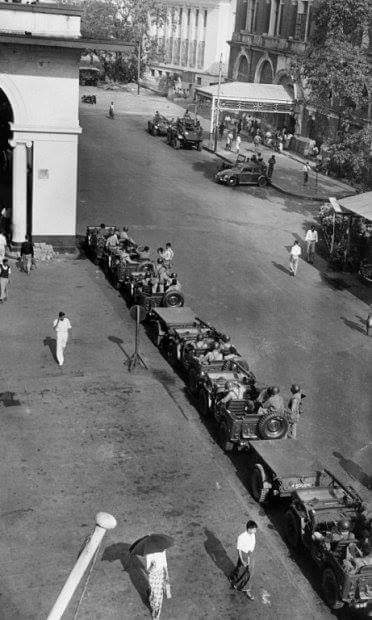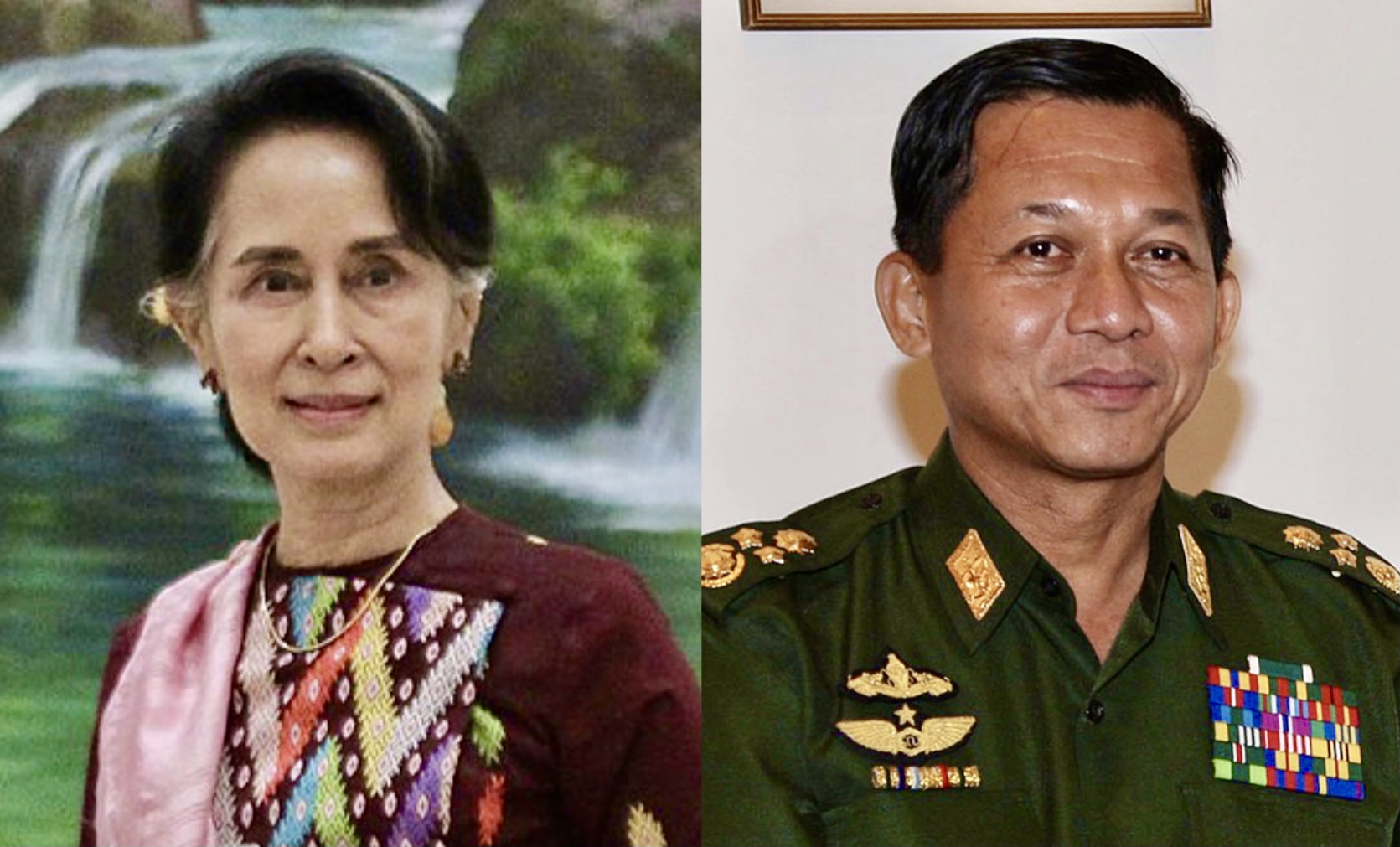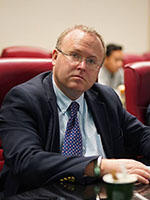Interpreting Myanmar’s 2021 „Veto“ Coup d’etat
Military “Veto” Coups have been prominent in countries where armed forces have played leading roles in society. In Southeast Asia, militaries have been prominent in Myanmar and Thailand, and the two countries have experienced their fair share of coups. The latest putsch occurred on February 1, 2021 in Myanmar. With Myanmar’s military having had a long and close relationship with Thailand’s armed forces, and both countries’ militaries prone to staging coups, one wonders to what extent Myanmar’s 2021 putsch can be explained in the context of the history of coups in mainland Southeast Asia. Does Myanmar follow the Thai model?
The putsch happened so suddenly that it caught many Myanmar-watchers by surprise. Its timing was calculated through numerology: decided at 3am on February 1, 2021, equaling Myanmar’s lucky number nine (0300 on 2/1/21, adds up to nine). And it seemed so well-meaning: General Min Aung Hlaing, the commander-in-chief of the military declaring that he simply needed to place the country under a national state of emergency for one year before a new election. But nothing at all was rosy. Following a series of raids, soldiers detained state and local governmental leaders as well as personnel from the ruling National League for Democracy party, including Aung Suu Kyi, Myanmar’s perennial icon of freedom. She might be imprisoned for years. Many Burmese went into hiding. Though a civilian-led government had existed since 2016, the country’s pseudo-democracy was now eviscerated. Given that Myanmar’s last coup in 1962 led to decades of direct military rule, naysayers could not be blamed for insinuating that Myanmar’s Tatmadaw (armed forces) were once again long-term rulers. Why did the 2021 coup happen? How did the motives for Myanmar’s 1962 putsch compare to the causes of the 2021 coup? Moreover, there have long been close relations between the military of Myanmar and that of its neighbor Thailand. In fact, Myanmar’s military has for many years been inspired by the way in which the military has maintained a dominating presence in Thailand. The Tatmadaw’s fascination with the Thai armed forces makes it plausible to also look at Thai coups in order to understand those in Myanmar.
Myanmar’s 1962 Coup

Ever since the 1947 assassination of independence leader Aung San, the Tatmadaw has almost always lorded over the country because of its monopoly on violence and perceived privilege to dominate society. 1962 Coup leader Gen. Ne Win stated that a main reason for his putsch was to stanch the disintegration of Burma (the Tatmadaw changed the name of the state from Burma to Myanmar in 1989) economically, administratively and politically. Tatmadaw leaders also felt that Burma’s parliamentary system was extremely wobbly and dominated by corrupt politicians while soldiers had had to shed blood to keep the country intact. They perceived that that they were more able leaders, having delivered the country from colonial rule and fought to stabilize it since independence. By 1962, the state had become much more state-centric in nature and the Tatmadaw saw it necessary to defend its bureaucratic interests.[1] Pandemonium within parliament and with regard to continuing rebellions provided a pretext for the coup.
Thailand’s 2006 Coup

Ever since 1980, Thailand has been dominated by an autocratic arrangement between monarchy and military with the latter as junior partner. Efforts at democracy have always proven to be a sideshow. The 2006 coup occurred primarily as a means to oust Prime Minister Thaksin Shinawatra, who was extremely popular with the rural poor (and thus dangerous to vested elite interests), as a means of retrenching Thailand back to an arch-royalist path more dominated by monarchy and military. Thaksin, who was initially elected Prime Minister in 2001 in a landslide, was reelected in 2005 to a supermajority in parliament. He dominated the police and a rising faction within the military. Even the judiciary and state monitoring agencies were packed with his appointees. However, the king had begun to turn against Thaksin in early 2006 and disaffected senior military officials organized by King’s Privy Council chair Prem Tinsulanonda began planning the putsch.[2] When the coup happened on September 19, 2006, Thais were split in reacting to it, given that the highly respected king endorsed it.
Thailand’s 2014 Coup
This putsch was a rerun of the 2006 coup in the sense that it was hatched to again oust a Thaksin-controlled ruling coalition which was formally led by Thaksin’s sister Yingluck (who was elected in a 2011 landslide). Her government began unraveling the constitutional changes which the 2006 coup-leaders had implemented. Therefore, a purpose of the coup was to ostensibly guard monarchy and protect the post-2006 powers of the army as well as its leading faction “Buraphapayak”. Because the king at this point was quite old and ailing, his death appeared to be on the horizon. Thus, senior military leaders, supported by aristocrats, were adamant that a pro-Thaksin government not be in office during that time. Chaos intensified as anti-Yingluck demonstrators occupied parts of Bangkok, thus providing a pretext for coup-leaders to act. Thais were again divided following the putsch.
The coup led to a five-year junta under which a military-endorsed constitution was enacted. Under that constitution, a junta-appointed Senate came to exist and a new electoral formula for Lower House elections was implemented which ensured that no political party could gain a majority of seats. With the junta-appointed judiciary and monitoring agencies overseeing the 2019 election, the junta party “Palang Pracharat” won at the polls (benefiting from the skewed electoral formula). Thereupon, 2014 coup leader Prayuth Chan-ocha took office and can remain in power at least until the next general election in 2023. Such is Thailand’s model of guided democracy which the Tatmadaw would assuredly like to adopt.
Myanmar’s 2021 Coup
In Myanmar, military rule had lasted from 1962 until 2011, when a hybrid pseudo-democracy, approved by the Tatmadaw, was allowed to assume power. But the 2011–2021 “democracy” was itself a delusion because the Tatmadaw maintained autonomous control over the use of force. In seizing power, the military contended without proof that the November 2020 election had been fraudulent and ambiguously promised to hold a new election in one year. A more likely reason was because the Tatmadaw felt as though its anticipated post-2015 continuing political dominance behind-the-scenes had slipped in the face of two super-landslide electoral victories by the Aung San Suu Kyi’s National League for Democracy (NLD) party. In fact, the Tatmadaw could only protect its enshrined powers because the 2008 constitution (which the Tatmadaw had created) allowed the Tatmadaw a 25 percent percentage of members in the Lower and Upper Houses of Parliament. Moreover, Armed Forces Commander General Min Aung Hlaing, who had succeeded his patron General Than Shwe in 2011, saw that time was not on his side. He would be required to retire in July 2021, and his successor would be appointed by the civilian President, after consulting with the National Defence and Security Council. In fact, the General had been maneuvering to set himself up as elected president in 2021, but the Tatmadaw’s proxy party, the Union Solidarity and Development Party (USDP), won only 33 of 476 available seats. Following Tatmadaw threats to not accept the election results, the coup finally occurred on the day that the new legislature was to begin its session. So why the coup?

First, the politically ambitious General Min Aung Hlaing had been deprived of his political ambition of becoming president through an election. Unelected, the General and his military associates would lack immunity from prosecution for previous war crimes allegedly committed against Burmese people. At the same time, an NLD victory might harm Myanmar generals’ business interests. General Min Aung Hlaing himself possessed supreme control over two military conglomerates, Myanmar Economic Corporation (MEC) and Myanmar Economic Holdings Limited (MEHL). His son, daughter and wife also direct their own businesses. Other generals, both retired and active, possess similar interests. The family of Ret. Gen. Than Shwe, former State Peace and Development Council (SPDC) junta leader, is said to control Myanmar’s jade industry. It is rumored that Than Shwe, who is still extremely powerful in the Tatmadaw, actually greenlighted the February 1 coup. Unlike in Thailand in 2006 and 2014, however, civilians have mobilized in unity against the putsch. Given the history of Burmese soldiers using violence to silence protestors, there is fear that the Tatmadaw will implement a similar violent strategy.
Conclusion
What all four of these coups have in common was that they all could be classified under what Huntington (1957) as well as David (1987) define as a “veto coup”. Veto coups are putsches aimed at destroying mass participation and social mobilization which might threaten property rights.[3] Such coups could easily happen in both Myanmar and Thailand because they are praetorian states where “the military tends to intervene and could potentially dominate the political system”.[4] Where Myanmar and Thailand differ is that the officer corps within the Tatmadaw has become a privileged economic class in and of itself – the most powerful in the country.[5] Except for Aung San Suu Kyi, civilian politicians lack sufficient united popularity to challenge the Tatmadaw’s power. When the top leaders of this class (Than Shwe, Min Aung Hlaing) find it necessary to overthrow a frail civilian government, they can and will do so. In Thailand, on the other hand, the military does have a monopoly on violence, but its power also derives from the legitimacy it has obtained as guardian of the monarchy, especially to the late King Rama IX, father of the current king, who was beloved by most Thais. The two recent Thai coups were also helped by the fact that Thais have been divided about Thaksin.
What the 2014–2019 Thai junta accomplished in terms of cementing military clout across the country is something which the Tatmadaw would clearly like to achieve in Myanmar. But the Thai military’s success in building a political party combined with constitutional rules and the stacking of judicial bodies all designed to sustain the arch-royalist military’s political dominance will be a feat difficult to mimic in Myanmar. That is because, to build Palang Pracharat, the Thai junta cajoled or bought up the factions (and vote-canvassing networks) of political bosses who had competed across several elections. But in Myanmar there is no sufficient history of elections from which a Tatmadaw proxy party can draw factions to build a political party. As a result, though Myanmar’s generals would like to borrow a page from Thailand by buying up electoral factions to help restore a “disciplined democracy” for Myanmar, that might prove to be a tall order. But as if to reaffirm the Tatmadaw’s desire to emulate Thailand’s military dominated democracy, in mid-February 2021, Thai Prime Minister Prayuth received a letter from junta leader Min Aung Hlaing asking the former Thai junta chief for help in Myanmar’s own “democratic process.” If a Myanmar pseudo-democracy led by a Tatmadaw proxy party cannot be established, the country might revert back to several years of life under military control. Such is the dark autocratic tunnel in which Myanmar’s past could once again be its future.
References
[1] Callahan, Mary (2004): Making Enemies: War and State Building in Burma, Ithaca, New York: Cornell University Press, p. 205.
[2] See Chambers, Paul (2013): A Short History of Military Influence in Thailand in: Chambers, Paul (ed.), Knights of the Realm: Thailand’s Military and Police, Then and Now, Bangkok: White Lotus Press, ch. 2.
[3] Huntington, Samuel (1957): The Soldier and the State. The Theory and Politics of Civil-Military Relations, Cambridge, MA: Harvard University Press; David, Stephen R. (1987): Third World Coups d’Etat, Baltimore, MD: Johns Hopkins University Press.
[4] Perlmutter, Amos (1969): The Praetorian State and the Praetorian Army: Toward a Taxonomy of Civil-Military Relations in Developing Polities, in: Comparative Politics 1:3, p. 383.
[5] See Crouch, Melissa (2019): The Constitution of Burma: A Contextual Analysis, Oxford: Hart Publishing, ch. 3.
Reihen
Ähnliche Beiträge
Schlagwörter
Autor*in(nen)

Paul Chambers

Latest posts by Paul Chambers (see all)
- Myanmars „Veto-Coup“ 2021: ein Interpretationsversuch - 19. März 2021
- Interpreting Myanmar’s 2021 „Veto“ Coup d’etat - 11. Februar 2021